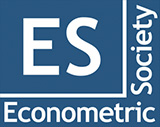Econometrica: Jul, 2019, Volume 87, Issue 4
The Macroeconomic Impact of Microeconomic Shocks: Beyond Hulten's Theorem
https://doi.org/10.3982/ECTA15202
p. 1155-1203
David Rezza Baqaee, Emmanuel Farhi
We provide a nonlinear characterization of the macroeconomic impact of microeconomic productivity shocks in terms of reduced‐form nonparametric elasticities for efficient economies. We also show how microeconomic parameters are mapped to these reduced‐form general equilibrium elasticities. In this sense, we extend the foundational theorem of Hulten (1978) beyond the first order to capture nonlinearities. Key features ignored by first‐order approximations that play a crucial role are: structural microeconomic elasticities of substitution, network linkages, structural microeconomic returns to scale, and the extent of factor reallocation. In a business‐cycle calibration with sectoral shocks, nonlinearities magnify negative shocks and attenuate positive shocks, resulting in an aggregate output distribution that is asymmetric (negative skewness), fat‐tailed (excess kurtosis), and has a negative mean, even when shocks are symmetric and thin‐tailed. Average output losses due to short‐run sectoral shocks are an order of magnitude larger than the welfare cost of business cycles calculated by Lucas (1987). Nonlinearities can also cause shocks to critical sectors to have disproportionate macroeconomic effects, almost tripling the estimated impact of the 1970s oil shocks on world aggregate output. Finally, in a long‐run growth context, nonlinearities, which underpin Baumol's cost disease via the increase over time in the sales shares of low‐growth bottleneck sectors, account for a 20 percentage point reduction in aggregate TFP growth over the period 1948–2014 in the United States.
Supplemental Material
Supplement to "The Macroeconomic Impact of Microeconomic Shocks: Beyond Hulten’s Theorem"
This zip file contains the replication files for the manuscript.
View zip
Supplement to "The Macroeconomic Impact of Microeconomic Shocks: Beyond Hulten’s Theorem"
This appendix contains material not found within the manuscript.
View pdf

